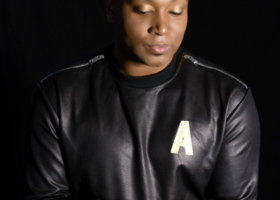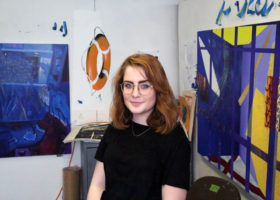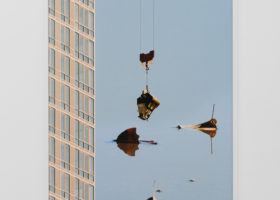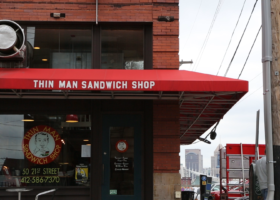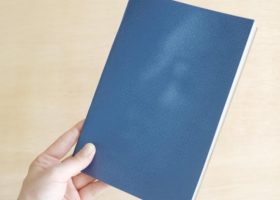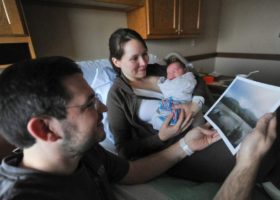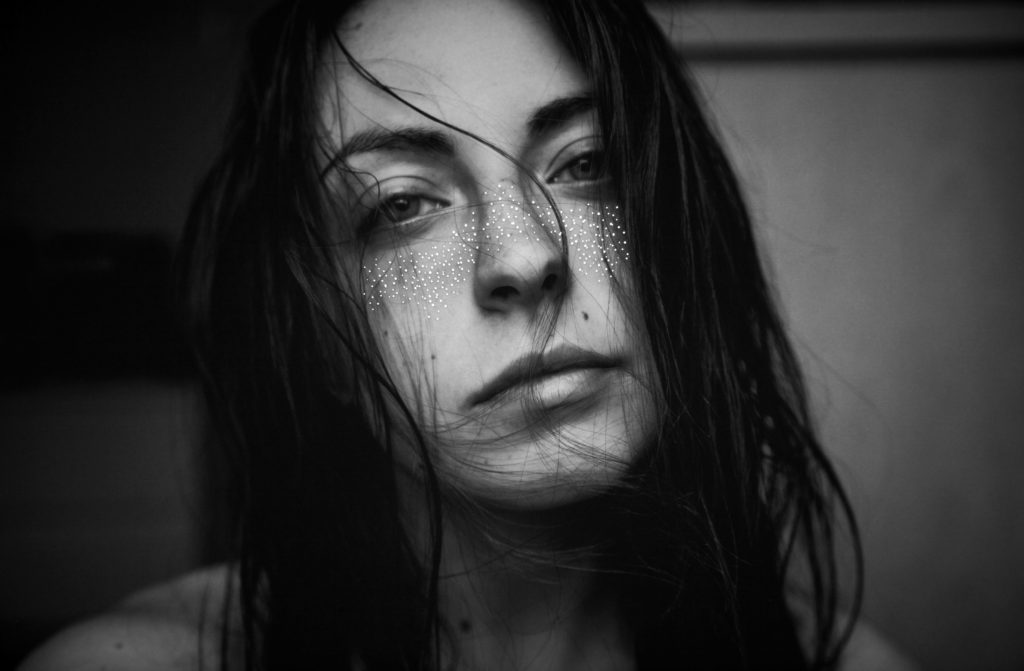
Last year, a photo series by Pittsburgh photographer Hannah Altman went viral. Featured in Cosmopolitan, Buzzfeed, and Vanity Fair, among others, And Everything Nice addressed societal stipulations of female beauty. In these photographs of “women in states of affliction,” bodily fluids like blood, vomit, and tears have been replaced with vibrant glitter, emphasizing the dissonance of expectation to appear physically attractive despite the very nature of physicality. Women bleed, Altman’s series said, but still they’re required to be beautiful.
Altman’s latest work continues to explore conceptions of women’s bodies, but while And Everything Nice relied on stark imagery—like nosebleeds, a safety razor, or a woman curled around a public toilet, all cast under uncomfortable lighting—her series Luminous / Weightless celebrates the female body. Captured in black-and-white, these portraits of women are punctuated with pinhole pricks. Arrayed across the subjects’ bodies, the tiny holes let light pierce through, giving an effect resembling galaxies of stars.
Next week, Luminous / Weightless opens at The Lantern, a new art gallery from the Pittsburgh Cultural Trust on Liberty Avenue downtown. I met with Altman for a coffee to discuss her work—read a lightly edited selection of our conversation below.
![]()
David Bernabo: How did your Luminous / Weightless project originate?
Hannah Altman: The project is a collection of the female energy in my life. I never really use models—it’s all friends and people I’m surrounded by. Most of us are artists, bouncing ideas off each other. We’re creating together, we’re collaborating. So I started photographing them in very natural environments where they feel comfortable and powerful and in their bodies. After that, I print out the photographs and poke holes in them with a needle. Then, when I put the print over a softbox, the light comes through. It’s representative of the energy that is existing within them, peeking out of those holes.
It’s interesting in putting the photographs back on the internet: I photograph it again, so that it’s a photograph of a photograph. And for the show, I’m building the actual lightboxes to create a more environmental space where people can see the light through the photographs.
DB: How did you come up with the pinhole idea?
HA: I do a lot of sewing, in general. I sew a lot of words into my prints. I thought it would be interesting if you took away what was preventing light from coming through a print. In a sense, it’s the needle without the thread.
DB: Do you pre-plan the patterns?
HA: It’s not very planned. I look at the prints and think, “That looks like a good area,” and start going with it. It makes its own pattern. It’s a fun surprise to see the result.
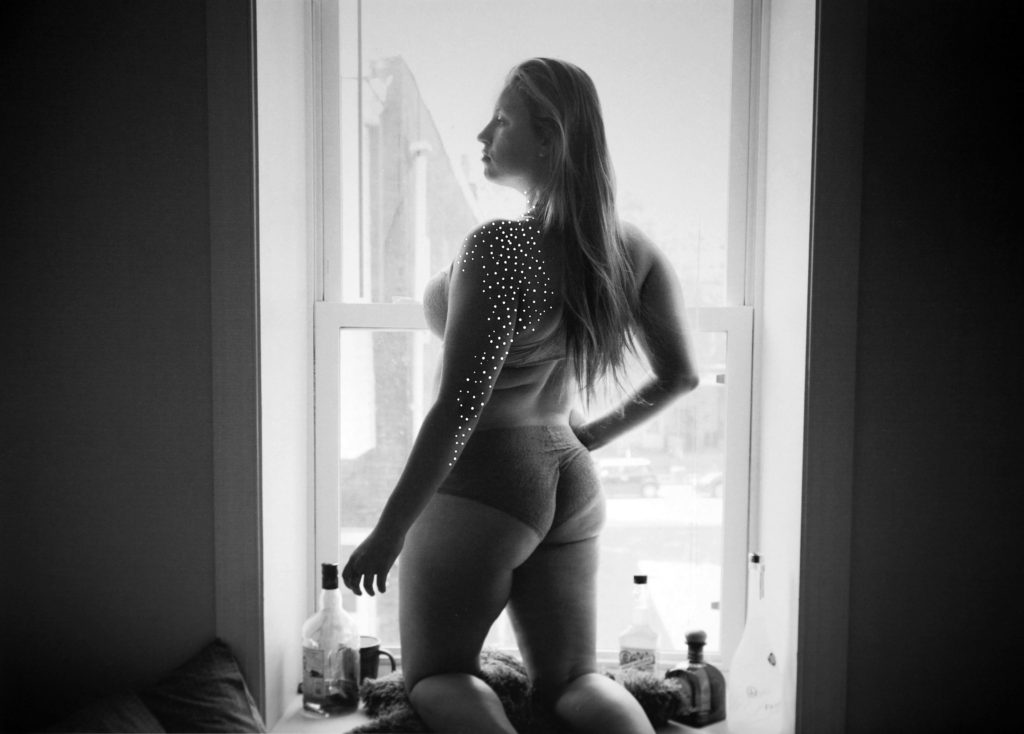
DB: If you are celebrating the female body within this series, there must be an opposing force in society that is countering that vision.
HA: For sure. Because a lot of women in this series are nude or partially nude, there’s often a sexualization, without the permission of the women, that is projected onto them. I like that these photos say, “This is how I’m projecting myself; this is how I choose to share my body and share it in a positive light,” literally and figuratively. Portraits can be used to control someone’s perception, and I want to use that as a positive force.
DB: So many publications covered your project And Everything Nice. Has that changed your approach to making work?
HA: It really hasn’t. Because I still make work under that same theme, the work feels continuous. If anything, it gives me motivation—that I should continue with this theme, because it’s important to me and it’s important to others. The experience also made me very aware of what I’m posting on the internet. [Before the first article], I had maybe a hundred followers on Tumblr, and then I woke up the next day and it was like a storm. It made me super aware that things that artists say can really make an impact if the right people are looking at it, if it catches on and people start to share ideas.
DB: It’s nice to have that validation that art can do something.
HA: Yeah. For me, it’s always been about making art regardless of whether or not people are seeing it. So, now that it is in a more public light, it’s exciting, it’s like, “Thank you”—[then I] run back into the darkroom to continue working.
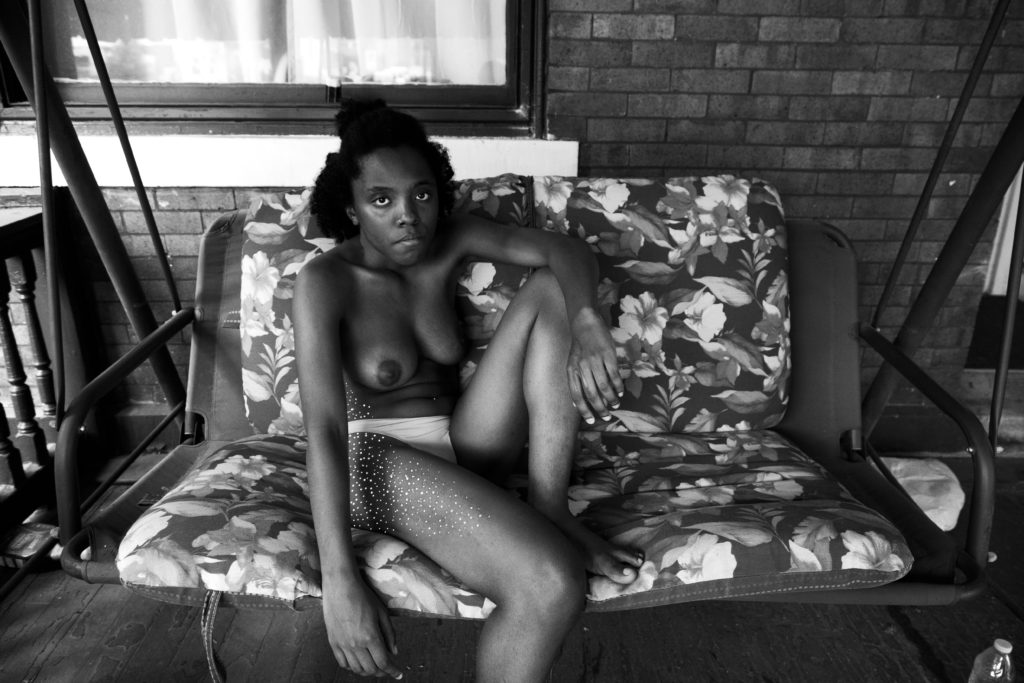
DB: Did the publicity increase print sales or gallery opportunities?
HA: That experience definitely kickstarted a lot of publications [covering the series]. I’m in at least one publication a month now. But I don’t feel like exhibiting that work. I’ve been approached with the opportunity a couple times, but because the work has existed so strongly on the internet, I don’t want to put it into a different setting. Because so many people reacted to it, the work feels more universal, and that makes the theme stronger. I was approached from publications everywhere from social justice publications to Cosmo. It’s a really strange range, but it means that everyone identifies with that project.
DB: Do you think the plethora of photographs online dilutes the impact of a physical photograph in a gallery?
HA: I’m a big Tumblr person; I have my feed so finely curated. But I always try to go out to the galleries. You can get the concept [from online photographs]. You can think that is such a great idea, but they don’t hit you physically the same way as when you go into the gallery. I don’t think one diminishes the other—they can both exist separately. But to see something in a gallery is a completely different experience than seeing something on the internet. And for a lot of mixed media, you have to see it in person.
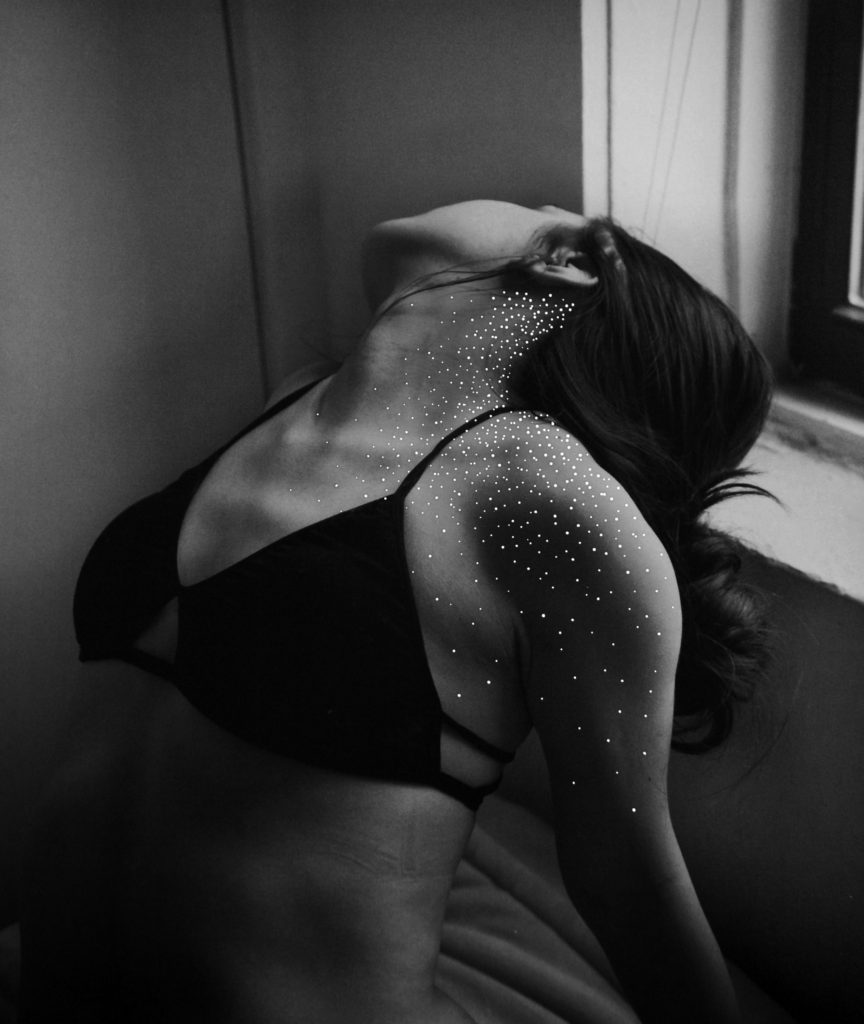
Luminous / Weightless opens at The Lantern, at 600 Liberty Avenue, on November 4, 2016 and runs through January 22, 2017.

